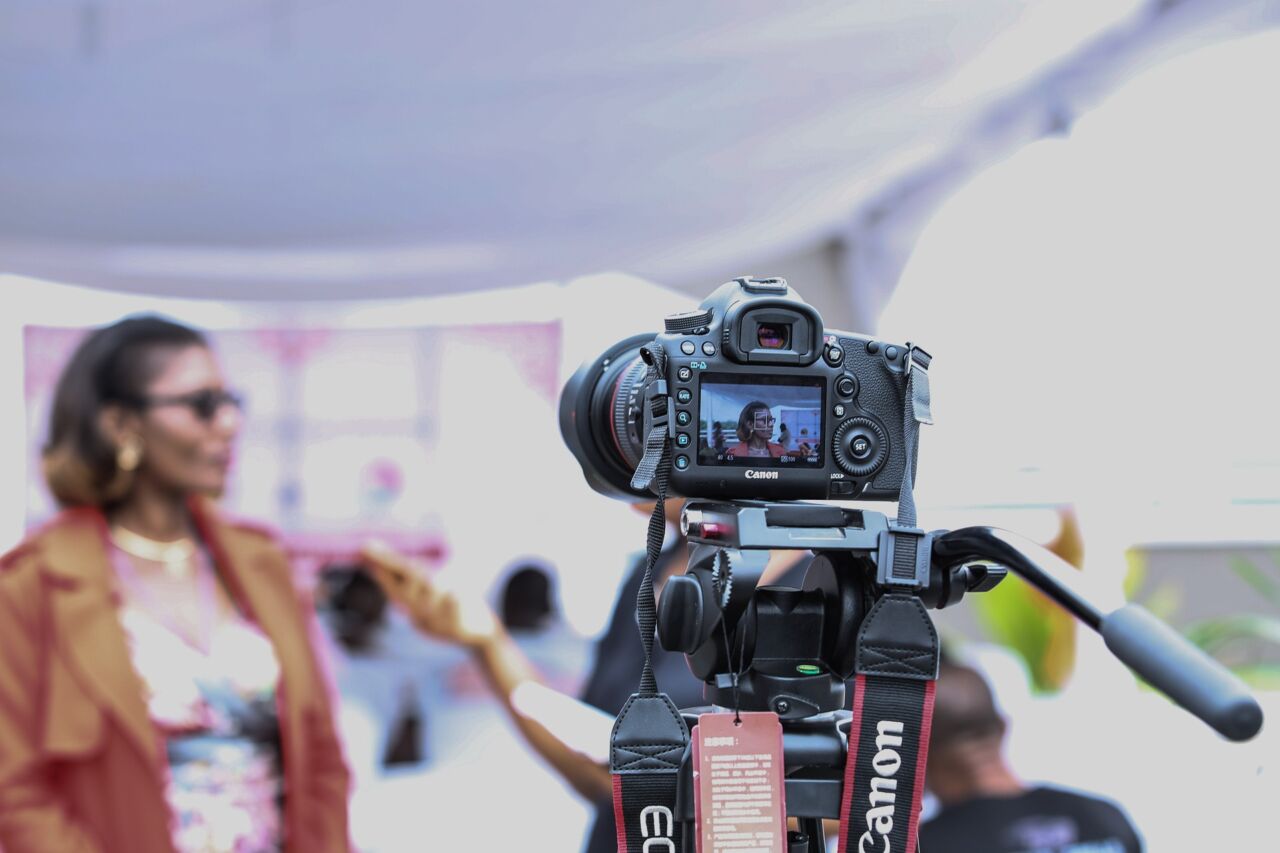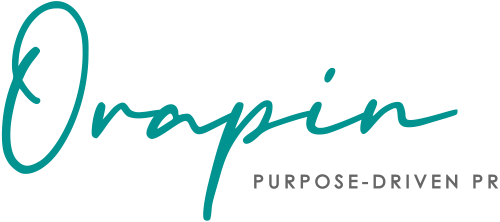
Whether it’s local or national, consumer, or trade, print, online, TV, radio, or podcast, here are tips to prep for successful media interviews
Receiving a request for a media interview is always a win. It is the opportunity to show off your expertise in a particular topic area or highlight the work your organization is doing every day to make the world a better place.
How you prepare for an interview depends on the medium. Each type of media outlet – print, online, broadcast TV, radio, and podcast – will have a different format for interviewing and how they will ask questions. Further, the media outlet’s audience will also dictate what kind of talking points you should prepare.
For example, the community writer at your local paper would probably be interested in an anecdotal story of how you helped a local family in need, whereas the editor of a trade publication for your industry would be more interested in the statistics of how many families, like the one you helped, are struggling. Make sure you are preparing the appropriate talking points for each and their respective audiences.
Here’s what to know and how to prepare for every type of media interview.
Is it a trade or consumer-focused outlet?
This question pertains to the type of audience the publication is writing for. A trade publication is writing for other people and organizations that work within or are somehow tied to a specific cause or industry. Consumer publications write for consumers, or otherwise said, anyone and everyone who fit a target demographic, those who are/do/have X (are a certain age, do certain activities, or have a certain lifestyle).”
For example, Psychology Today writes for people who are licensed psychologists or work in connection with the behavioral health industry, whereas VeryWell is a publication for the general public who may be interested in learning about health-related topics including behavioral health. As such, Psychology Today is going to provide technical knowledge, industry trends, and clinician profiles and VeryWell might share information on tips for how people can improve their mental health or begin a recovery journey.
Preparing for trade versus consumer outlet interviews
Trade publications will want to interview an organization’s CEO or subject matter expert about their work, trends, innovations, challenges, and wins within the industry. Consumer publications will want to tell the fluffy backstory about why you are helping people, how you help people, or who you are helping. Know the audience and prepare talking points accordingly.
Is the outlet local or national?
This question refers to the geographic location of the publication’s audience, not the location of the publication’s offices. For example, Healthcare Executive has headquarters in Chicago, IL, but they write for a national audience, so it is a national publication. The Denver Post and ColoradoBiz Magazine are local or regional publications as their audiences live in the geographic area their circulation serves. Both national and local outlets are valuable for your PR strategy and can be great agents to help generate exposure for your cause.
When a publication is focused on local or regional news, it may publish stories of national significance, but most of the content will be relevant to their community or how national news affects their community.
On the flip side, publications with a national audience may occasionally cover news from an organization that doesn’t have a national footprint, but this is very rare. Most national news outlets will cover organizations with many locations throughout the country, who serve people in all 50 states, or whose impact is significant and directly relates to timely news or trends.
National publications may interview your executive or SME as an expert source, even if your organization doesn’t have a national footprint, but their qualifications will need to indicate that they have the expertise and credentials to speak to topics of national significance or if they are a nationally recognized expert in their field.
Preparing for local versus national media interviews
A local news outlet will want to know how your organization is creating change or affecting people within the community. As a result, they will want to know what is happening here and now. Prepare for a local interview by having talking points that share stories of local significance. The interview may be about a new service you are launching. Prepare talking points and examples of who that service will support in the community, what need or problem the new service addresses, and how people can access it. Share anecdotal stories about local individuals who benefit from your work. Anything that can help illustrate how your work is affecting the community is great to include in the local news interview. This is the moment to tell stories that pull at the heartstrings and inspire readers or viewers to take action.
National news outlets, though they still love stories that pull at the heartstrings, will want to know how your work will be scaled or make a difference on a national level. If you’ve landed a story in the New York Times, chances are you’re doing something really big, unique, and important. Prepare talking points that speak to national trends or statistics and tell stories that support those national trends.
What medium is the outlet?
The medium, or type of media outlet, will also determine how and what you should prepare for an interview. Research is critical for any interview, regardless of the outlet. Always, always research both the reporter and the outlet in your preparation for the interview. Make sure you have a good idea of what type of content the outlet is sharing, what kind of format it is presented in, and how in-depth they’ll want you to go on your particular topic. Also, familiarize yourself with the reporter by reviewing their LinkedIn and Twitter/X profiles and reading a few of their recently published articles (or watching their stories or listening to a few podcast episodes) to get a sense of their tone, style, and areas of passion and interest. The more you know about them, the better report you’ll have and the more comfortable the interview will be.
Preparing for podcast or long-form radio interviews
For podcast and long-format radio interviews, you should listen to several episodes of the show to get a sense of the flow, tone, and depth of the reporting or discussion. Radio and podcast interviews tend to be longer-form interviews, so there’s typically time to do a deep dive into the particular subject. As such, make sure to come prepared to talk in-depth about your organization’s origin story, goals for the future, what you/your organization is doing, and how you are making a difference in the world. Think about the podcasts and radio shows that you regularly tune into and what makes them interesting. The best interviews are always ones where you get a sense of the person on the other side of the mic and a connection is made. These types of interviews are a great way to showcase your expertise and personality so use this opportunity to help listeners make a connection and affinity with you and your cause.
Preparing for print/online interviews
Interviews for print or online outlets may take place over the phone or in person if there is a visual element to the story that the writer is hoping to see or photograph. These types of interviews may be anywhere from 10 minutes to an hour, depending on whether or not the reporter is looking for a quick comment about a situation or an in-depth view of the state of your industry. Talk with the reporter beforehand to get a sense of what types of questions they will be asking. It’s a faux pax to outright ask for a list of questions in advance but reporters will share a more general “I was hoping to get your thoughts on the state of mental healthcare in the region” type of direction. Because you likely won’t have the exact questions they will ask, it is best to over-prepare. Create a list of talking points that you want to make sure you include in your responses. Include stats, data, and metrics that are applicable and help support your viewpoints. Anecdotal stories can be a good way to paint the picture as well, depending on the theme or direction of the interview.
Reporters will typically type, record, or handwrite notes as you speak, so be aware that everything you say can be quoted in print. Remember it is ok to take your time and be thoughtful in your responses. Saying “Let me take a moment to think about how to best phrase this…” is completely acceptable. Speak in complete sentences so that when that quote is printed, you have clearly and concisely made your point.
Preparing for TV news or short-format broadcast radio interviews
TV and radio – your local TV news, national shows, or public radio stations – are almost always short-format storytelling. Stories will typically last less than five minutes and usually include storytelling from the reporter or anchor, plus a quote or two from the interviewee. Prepare and rank your key messages, know what point or idea is the most important to get across in the interview, and make sure you communicate it.
Though the reporter may interview you for 10 or 15 minutes, they will typically only include a couple of soundbites in the broadcast segment. Knowing that you may only have a couple of seconds of airtime, make sure your responses are clear, concise, and complete. Talk in sound bites, and as with print, try to use complete sentences that clearly and concisely communicate your key messages. Do your best to avoid filler words and phrases such as “um,” “you know what I mean,” “well, to be honest,” etc. Make sure to practice and prepare what you want to say. Also, know that you can request a do-over if the interview is being recorded and not filmed live. If you are on a live broadcast, you just get one shot, so review and practice your talking points. Feel free to ask the reporter for as much information about their question as they’re willing to give in advance so you can prepare as best as you can.
Before the interview, practice responses in the mirror or record yourself on your phone so that you can see if you are making any funny facial expressions, playing with your hair in a distracting way, or fidgeting with your hands unknowingly. Be calm, be friendly, and don’t forget to smile! We recommend wearing solid-colored clothing, simple make-up, and limited accessories. Patterns and complicated jewelry tend to be distracting on camera, remember you want viewers to focus on your message, not your wild outfit.
Preparation is the key to successful media interviews
As with most things in life, the more time and effort you put into preparing for your interview, regardless of the medium, the more successful you will be. Knowing your talking points and committing them to memory will help ensure you avoid that “deer in headlights” moment. Having facts and stats to back up your statements and views is always a good idea.
There are no “do-overs” with media interviews and you have one shot to get your message and story across, so make sure you step in with your best foot forward. As a result, you’ll hopefully end up with a great story that connects you to a wider audience and that you can share across your owned media channels. At the end of the day, media coverage is one of the best tools to amplify your voice, create awareness for your cause, and grow your audience.

Diana Crawford is a seasoned public relations consultant with more than 15 years of agency, consulting, and in-house experience. She joined Orapin in 2013 and manages account services and client communications strategy development. She has worked across a variety of industries and has expertise with professional services, food/alcohol, health and wellness, lifestyle, sports, education, tech, and non-profit organizations.
